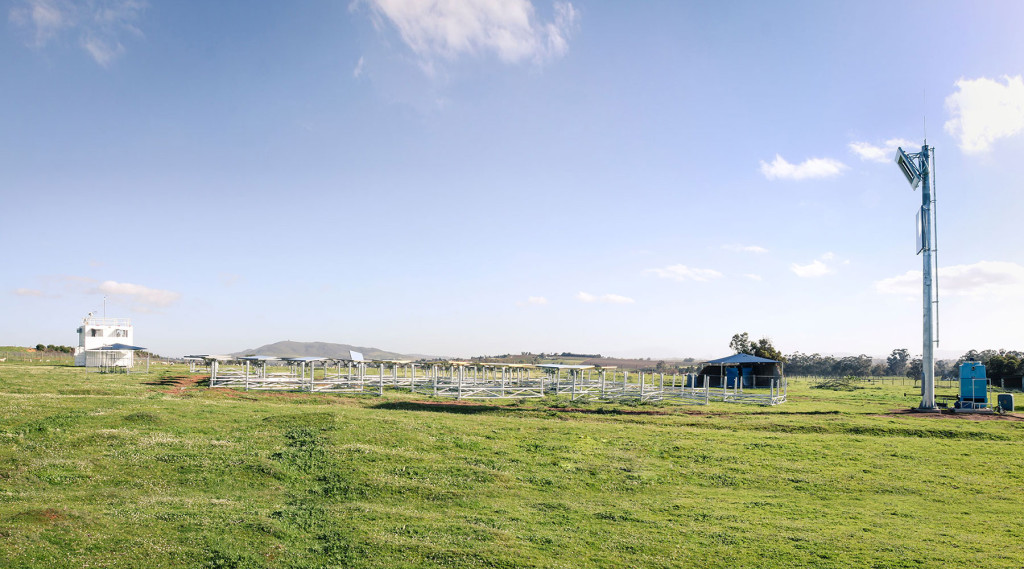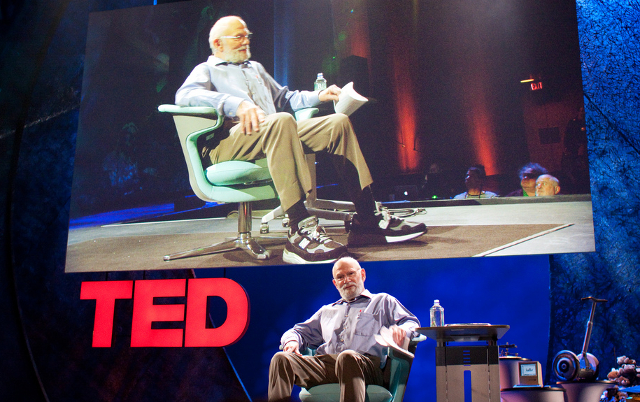
150kW
One of the problems with CSP, or concentrated solar power, is that it’s investment heavy. The Ivanpah solar power plant on the California-Nevada border, for instance, is three towers surrounded by 173,500 mirrors (heliostats, if we’re being technical) that get the top of the towers warm enough to melt, well, almost anything basically. It generates hundreds of megawatts of power, of course, and in terms of economies of scale is probably quite efficient. But it also cost over two billion dollars to build. And that’s going to prevent smaller-scale operations getting involved. But now a team of researchers in South Africa calling themselves Helio100 is aiming to change that, by scaling down and going modular. The idea is to make the so-called “Model T” of concentrated solar: make it repeatable, small scale, and efficient. Something you can buy and “plonk down” just about anywhere. It should be something two people (or, as they say, one rugby player) could assemble in a day. The unveiling of the prototype, which they say is already cheaper at the 150kW model than diesel, is set for October 17, and I can’t wait to see it. Here’s an article describing it from the Guardian, and the Helio100 team also has a website and an instagram account. Check it out!

1.2 × 106 km2
A new research paper out in the journal Geophysical Research Letters this week suggests that there’s a lot more ice on Mars than previously thought. By looking at data from the Mars Reconnaissance Orbiter’s HiRISE and SHARAD instruments — especially at walls of some odd, terraced craters — they’ve been able to identify what certainly appears to be a subsurface ice sheet. And it’s a big one: their conclusions list it as a mean depth of 51 meters (with an 18 meter standard deviation, so these aren’t the most precise numbers), and a surface area not bigger than 1.2 × 106 km2, which is, well, big. That’s 1.2 million square kilometers, or about six and a half times the size of New England. They estimate that the ice is tens of millions of years old, and probably comes from snowfall — though exactly how it would have survived up to the present day is somewhat mysterious. You can check out more details on the story at the University of Arizona, or by reading the article itself if you can get behind the paywall.

103/100
With the addition of it’s new “insane mode,” the Tesla Model S P85D has done something rather worth mentioning: it broke Consumer Reports’ rating scale. According to a press release on Thursday, the car scored 103/100 on their old ratings system, which required some rejigging after the fact. The car now scores 100/100 (as well it should) and it’s just going to be harder in the future for other cars to get there. That’s what they call “setting the bar a little higher.” Of course it’s not that surprising: it’s a consumer car that uses zero fossil fuels and goes from 0-60mph in 3.5 seconds, which, to say the least, is supercar territory. With four doors. You can check out any number of sites talking about it, as well as the press release over at Consumer Reports.

82 Years
We have lost one of our greats. Neurologist and author Dr. Oliver Sacks has died, aged 82. He announced in a touching editorial in the New York Times that he had terminal cancer back in February, and I strongly urge you to go read it. He was a man of many talents, not only as a doctor but as a public intellectual, writing such memorable pieces as “The Man Who Mistook His Wife for a Hat,” and “Awakenings.” Others have covered his life better than I could, and so you should go read those.
ICMYI
If you haven’t been following the other stories at This Week In Tomorrow this week, here’s your chance to check them out: We began the week by chuckling about “gluten free” thyme; Tuesday was a more pessimistic view of robots taking our jobs; Wednesday’s thoughts were about how hope can sometimes lead us astray; Thursday was a little info about my favourite 17th-century “scientist” Athanasius Kircher; and Friday’s feminism centered around the problems that surface when trying to “date while feminist.”
Best of the Rest
There’s always more than I have time to write about, but here’s more of what happened this week:
- Retraction Watch did a great article on the new psychology reproducibility study that just came out
- New data surfaced from the LHC that suggests physics in defiance of the standard model (at last!)
- The Japanese HTV resupply mission to the ISS was successful, and definitely understated
- Dawn got closer to the surface of Ceres, and sent back some new (weird) images
- Twitter cracked down on sites preserving deleted political tweets (aka “politwoops”), and
- A great photo made the rounds of a jet breaking the sound barrier.
I’ll leave you this week with a link to… well, it’s an interesting short film. It’s by Yasuhiro Yoshiura, the director of Patema Inverted and Time of Eve, which, if you haven’t seen, are wonderful, playful looks inward as well as forward. Check those out, and follow this link to io9, which gives you a little intro to the short film so that it makes a little more sense.
Thanks for reading, and don’t forget to like us on facebook, or follow me on twitter, and have a great week.
